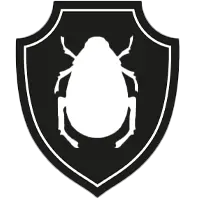I get it, finding wasps in your fireplace can be daunting. As a pest control specialist, I’ve seen this more often than you’d imagine.
This article aims to provide practical, easy-to-follow solutions to rid your fireplace of these uninvited guests.
After reading, you’ll feel equipped to deal with any wasp problem. Let’s face the wasp situation together!
How to get rid of wasps in the fireplace – 3 solutions
Finding wasps in your fireplace may be alarming, but don’t worry, I have some solutions. These are methods that I have found most effective throughout my years of experience.
Solution 1: Safe and natural methods
You may be thinking of reaching for the insecticide spray, but there are safer, more natural methods. Essential oils, such as peppermint, can be quite effective. Wasps dislike strong scents, and peppermint oil can deter them. Dilute it with water, put it in a spray bottle, and spray around your fireplace. Always wear protective clothing while doing this.
Solution 2: Hiring professional pest control services
If the infestation is significant or you’re not comfortable handling this on your own, consider hiring professionals. Pest control specialists, like myself, are trained in safely removing wasps and their nests without causing harm to your home or the environment. Plus, we’ll do all the hard work, so you won’t have to!
Solution 3: Implementing preventative measures
The best way to avoid a wasp problem is to prevent it from happening in the first place. Regularly checking your fireplace for signs of wasp nests, sealing cracks and gaps where they could potentially enter, and using wasp repellents can help keep your fireplace wasp-free.
Now that you know how to get rid of wasps in your fireplace, it’s also essential to know how to identify signs of wasp infestation. That’s what we’ll dive into in the next section.
Identifying wasp infestations in your fireplace
We’ve discussed solutions to a wasp problem, but how do you know if you have one in the first place? Let’s learn to spot the signs and understand more about these creatures.
Spotting the signs of a wasp nest
Wasps are social insects and usually live in colonies. If you notice a high number of wasps around your fireplace or hear buzzing sounds, there might be a nest nearby. Look out for papery structures in your fireplace or even in the chimney, these could be wasp nests.
Different types of wasps you might encounter
Identifying the type of wasp can help you understand its behavior and the potential risk. The common ones are paper wasps, yellow jackets, and hornets. Paper wasps build their nests in safe, enclosed spaces like your fireplace. Yellow jackets are more aggressive and build their nests underground. Hornets are the largest, and their sting is more painful.
Remember, your safety is paramount. If you’re unsure about the type of wasp or the extent of the infestation, consider calling a pest control professional.
Understanding the risks associated with having wasps in your fireplace is also important. We’ll address these potential dangers in the next section.
The potential risks of having wasps in your fireplace
Identifying wasps and dealing with them is one part of the puzzle, but knowing why it’s essential to do so is equally important. In this section, we’ll talk about the potential risks of having wasps in your fireplace.
The dangers of wasp stings
While most wasps are not aggressive unless provoked, their stings can be painful and potentially dangerous, especially if you’re allergic. Symptoms can range from mild irritation and redness to severe allergic reactions that require immediate medical attention.
Structural damage caused by wasp nests
Wasps’ nests might seem harmless at first, but they can cause significant structural damage over time. They often chew through wood to create their papery homes, which can weaken your fireplace or chimney structure.
The fact that wasps can be hazardous doesn’t mean they can’t be dealt with effectively and safely. And that’s what we’ve been discussing throughout this article. In our final section, we will recap the key points to ensure you’re armed with the knowledge to keep your fireplace wasp-free.
Conclusion
Dealing with wasps in your fireplace can be a challenge, but with the right knowledge, it becomes manageable.
From identifying signs of an infestation to safe and effective solutions, and understanding the risks, we’ve covered it all.
Remember, if the task seems daunting, professional pest control services are just a call away. Here’s to maintaining a safe, comfortable, and wasp-free home!

